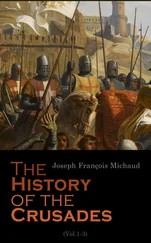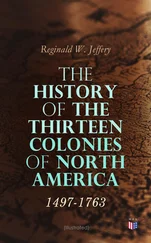In the winter of 1639, on the 6th of January, during the incumbency of Sir Francis Wyatt, the General Assembly passed the first prohibition against Negroes. "All persons," doubtless including fraternizing Indians, "except Negroes," were required to secure arms and ammunition, or be subject to a fine, to be imposed by "the Governor and Council." 144The records are too scanty, and it is impossible to judge, at this remote day, what was the real cause of this law. We have already called attention to the fact that the slaves were but a mere fraction of the summa summarum of the population. It could not be that the brave Virginians were afraid of an insurrection! Was it another reminder that the "Negroes were heathen," and, therefore, not entitled to the privileges of Christian freemen? It was not the act of that government, which in its conscious rectitude "can put ten thousand to flight," but was rather the inexcusable feebleness of a diseased conscience, that staggers off for refuge "when no man pursueth."
Mr. Bancroft thinks that the "special tax upon female slaves" 145was intended to discourage the traffic. It does not so seem to us. It seems that the Virginia Assembly was endeavoring to establish friendly relations with the Dutch and other nations in order to secure "trade." Tobacco was the chief commodity of the colonists. They intended by the act 146of March, 1659, to guarantee the most perfect liberty "to trade with" them. They required, however, that foreigners should "give bond and pay the impost of tenn shillings per hogshead laid upon all tobacco exported to any fforreigne dominions." The same act recites, that whenever any slaves were sold for tobacco, the amount of imposts would only be "two shillings per hogshead," which was only the nominal sum paid by the colonists themselves. This act was passed several years before the one became a law that is cited by Mr. Bancroft. It seems that much trouble had been experienced in determining who were taxable in the colony. It is very clear that the LIV. Act of March, 1662, which Mr. Bancroft thinks was intended to discourage the importation of slaves by taxing female slaves, seeks only to determine who shall be taxable. It is a general law, declaring "that all male persons, of what age soever imported into this country shall be brought into lysts and be liable to the payment of all taxes, and all negroes, male and female being imported shall be accompted tythable, and all Indian servants male or female however procured being adjudged sixteen years of age shall be likewise tythable from which none shall be exempted." 147Beverley says that "the male servants, and slaves of both sexes," were employed together. It seems that white women were so scarce as to be greatly respected. But female Negroes and Indians were taxable; although Indian children, unlike those of Negroes, were not held as slaves. 148Under the LIV. Act there is but one class exempted from tax—white females, and, we might add, persons under sixteen years of age. 149So what Mr. Bancroft mistakes as repressive legislation against the slave-trade is only an exemption of white women, and intended to encourage their coming into the colony.
The legal distinction between slaves and servants was, "slaves for life, and servants for a time." 150Slavery existed from 1619 until 1662, without any sanction in law. On the 14th of December, 1662, the foundations of the slave institution were laid in the old law maxim, " Partus sequitur ventrum ,"—that the issue of slave mothers should follow their condition. 151Two things were accomplished by this act; viz., slavery received the direct sanction of statutory law, and it was also made hereditary. On the 6th of March, 1655—seven years before the time mentioned above—an act was passed declaring that all Indian children brought into the colony by friendly Indians should not be treated as slaves, 152but be instructed in the trades. 153By implication, then, slavery existed legally at this time; but the act of 1662 was the first direct law on the subject. In 1670 a question arose as to whether Indians taken in war were to be servants for a term of years, or for life. The act passed on the subject is rather remarkable for the language in which it is couched; showing, as it does, that it was made to relieve the Indian, and fix the term of the Negro's bondage beyond a reasonable doubt. " It is resolved and enacted that all servants not being Christians imported into this colony by shipping shall be slaves for their lives; but what shall come by land shall serve, if boyes or girles, until thirty yeares of age, if men or women twelve yeares and no longer." 154This remarkable act was dictated by fear and policy. No doubt the Indian was as thoroughly despised as the Negro; but the Indian was on his native soil, and, therefore, was a more dangerous 155subject. Instructed by the past, and fearful of the future, the sagacious colonists declared by this act, that those who "shall come by land" should not be assigned to servitude for life. While this act was passed to define the legal status of the Indian, at the same time, and with equal force, it determines the fate of the Negro who is so unfortunate as to find his way into the colony. " All servants not being Christians imported into this colony by shipping shall be slaves for their lives ." Thus, in 1670, Virginia, not abhorring the institution, solemnly declared that "all servants not christians"—heathen Negroes—coming into her "colony by shipping"—there was no other way for them to come!—should " be slaves for their lives !"
In 1682 the colony was in a flourishing condition. Opulence generally makes men tyrannical, and great success in business makes them unmerciful. Although Indians, in special acts, had not been classed as slaves, but only accounted "servants for a term of years," the growing wealth and increasing number of the colonists seemed to justify them in throwing off the mask. The act of the 3d of October, 1670, defining who should be slaves, was repealed at the November session of the General Assembly of 1682. Indians were now made slaves, 156and placed upon the same legal footing with the Negroes. The sacred rite of baptism 157did not alter the condition of children—Indian or Negro—when born in slavery. And slavery, as a cruel and inhuman institution, flourished and magnified with each returning year.
Encouraged by friendly legislation, the Dutch plied the slave-trade with a zeal equalled only by the enormous gains they reaped from the planters. It was not enough that faith had been broken with friendly Indians, and their children doomed by statute to the hell of perpetual slavery; it was not sufficient that the Indian and Negro were compelled to serve, unrequited, for their lifetime. On the 4th of October, 1705, "an act declaring the Negro, Mulatto, and Indian slaves, within this dominion, to be real estate," 158was passed without a dissenting voice. Before this time they had been denominated by the courts as chattels: now they were to pass in law as real estate. There were, however, several provisos to this act. Merchants coming into the colony with slaves, not sold, were not to be affected by the act until the slaves had actually passed in a bonâ-fide sale. Until such time their slaves were contemplated by the law as chattels. In case a master died without lawful heirs, his slaves did not escheat, but were regarded as other personal estate or property. Slave property was liable to be taken in execution for the payment of debts, and was recoverable by a personal action. 159
The only apology for enslaving the Negroes we can find in all the records of this colony is, that they "were heathen." Every statute, from the first to the last, during the period the colony was under the control of England, carefully mentions that all persons—Indians and Negroes—who "are not Christians" are to be slaves. And their conversion to Christianity afterwards did not release them from their servitude. 160
Читать дальше












